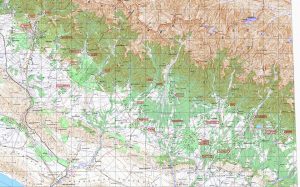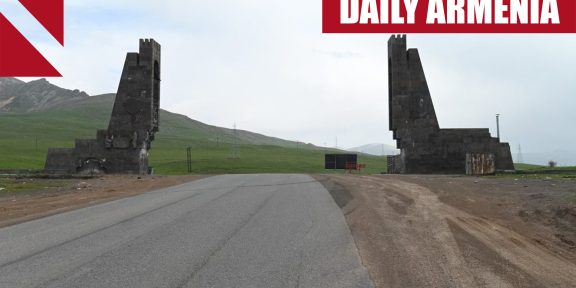USC Institute of Armenian Studies has published an article discussing the issue of ‘Hidden Armenians’ of Azerbaijan.
Over the past decade the topic of Turkey’s ‘hidden Armenians‘ has received considerable academic and media scrutiny. The term generally refers to those Turkish citizens, whose ethnic Armenian ancestors adopted Islam and Turkish and Kurdish identities to escape persecution, particularly at the time of the Armenian genocide, but also in earlier periods, as with the more isolated communities, such as Hemshins.
Also watch: Hidden Armenians visit Genocide Memorial
Much less has been written of ethnic Armenians assimilated in Azerbaijan. One paper by sociologist Sevil Huseynova has looked at people of full or partial Armenian descent, almost all of them women, who remained in post-Soviet Baku under non-Armenian identities. Even less is known of Azerbaijani rural communities that went through Islamization as recently as in the 18th century and have since largely assimilated into Azerbaijani mainstream.
In a recent paper delivered at an Armenian Academy of Sciences conference, Samvel Meliksetyan reviews 18th century archival sources that witnessed Islamic conversions of ethnically Armenian and Udi communities of Sheki-Qebele area in northern Azerbaijan in the 1720s. At the time, insurgents against Persian empire led by an ethnic Lezgin Haji Davud, sought to establish an independent state in what is now northern and northeastern Azerbaijan and southern Dagestan, and forced both Shiites and Christians to convert to Sunni Islam.
Also watch: Hidden Armenians from Diyarbakir Discover Armenia

According to estimates gleaned by Meliksetyan, tens of thousands of Christians in dozens of villages converted (see map). Today, a Christian Udi community survives in only one of the area villages, Nij in Qebele (former Kutkashen) district; there are also Muslim, but ethnically Georgian communities further north in Kakh district. In the late 1980s, Armenian and Udi populations fled other nearby localities, including Sheki (former Nukha) and Oguz (former Vartashen), as well as the Ismailly and Shamakhi districts further to the south. While most of Azerbaijan is traditionally Shiite, the rural areas of Sheki-Qebele area remain majority Sunni Muslim.
One of the key contemporary sources cited by Meliksetyan is Johann Gustav Gerber, a German-born officer in the Russian service, who surveyed the area in 1728. According to Gerber, forced conversions of Christians, particularly in the Qebele area, “where all Armenians have been forced to become Muslim,” were still taking placed just a year earlier. Some of these converts later reverted to Christianity, but most others remained Muslim.
According to Nukha (Sheki)-born Azerbaijani scholar and educator Rashid-bek Efendiyev, also cited by Meliksetyan, memories of the 18th century conversions were fairly fresh in Sheki-Qebele area in the late 19th century. At the time, local residents still referred to the area as Gavurstan (country of infidels or non-Muslims) and local nobility, the khans of Sheki, traced their lineage to an Armenian priest who converted to Islam.
In picture: A former church in the village of Kish in Sheki district of Azerbaijan.
















